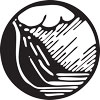E Kanikapila Kakou 2019 “Music is Our Mo’olelo”
E Kanikapila Kakou 2019 “Music is Our Mo’olelo”
Garden Island Arts Council presents ten weeks of the best of Hawaiian Music, Artists, Composers, Storytellers, Kumu Hula who share their songs, stories and dance in a casual interactive setting. Many Mondays start with an hour of ‘ukulele or hula lessons for interested participants. Food and drink available for purchase.
Held on Mondays, 6:00-9:00 pm at Aqua Kauai Beach Resort Jasmine Ballroom.
Dates:
January 21, 2019
January 28, 2019
February 4, 2019
February 11, 2019
February 18, 2019
February 25, 2019
March 4, 2019
March 11, 2019
March 18, 2019
March 25, 2019
Donations welcome at the door.
Supported in part by Hawaii Tourism Authority
Contact or Info: (808) 245-2733; giac05@icloud.com











You must be logged in to post a comment.